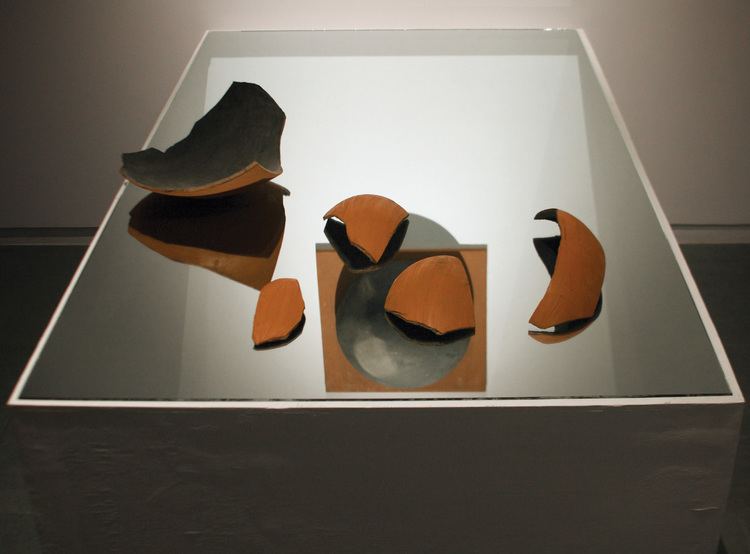Occupation Conceptual artist Name Rummana Hussain | ||
 | ||
Hussain Rummana " Textured Terrian "
Rummana Hussain (1952–1999) was an artist and one of the pioneers of conceptual art, installation, and politically-engaged art in India.
Contents
- Hussain Rummana Textured Terrian
- Biography
- Work
- Solo exhibitions
- Group exhibitions
- Performance and video
- References

Biography

Hussain was born in Bangalore, India to a prominent Muslim family. She was the sister of Wajahat Habibullah and wife of Ishaat Hussain. For much of her career, Hussain worked in oil and watercolor. She created largely allegorical figurative paintings. Her art underwent a significant transformation, however, after the events of 1992 in Ayodhya, India – a conflict between Hindu and Muslim communities which led to the destruction of the Babri Masjid. In response to the communal violence of the events, as well as to her sudden exposure to ideological assault as a Muslim, Hussain’s art not only became more explicitly political as well as personal, but it moved away from traditional media towards installation, video, photography, and mixed-media work. Throughout the 1990s, Hussain participated in exhibitions and events organized by SAHMAT, the Safdar Hashmi Memorial Trust, alongside other politically-conscious artists and performers. She was invited to be an artist-in-residence at Art in General in New York City, in 1998, just a year before she died, at age 47, after a battle with cancer. Hussain’s work has been on view in exhibitions and art fairs worldwide, including at Tate Modern, in London, National Gallery of Modern Art (NGMA), in Mumbai, Smart Museum, in Chicago, the 3rd Asia Pacific Triennial, in Brisbane, Australia, and at Talwar Gallery, which represents the estate of the artist. Her work is included in the permanent collection of the Queensland Art Gallery, in Queensland, Australia.
Work
Hussain is cited as one of the foremost leaders in the development of conceptual art in India, and is credited with bringing the possibilities and merits of diverse media to critical and popular attention. Despite her association with conceptual art, however, Hussain’s work remains grounded in the physical using, rather than ignoring, the “sensuousness” of the various materials that make up her installations. Critics often reference this emphasis on materiality in the discussion of the social, specifically feminist, concerns of much of Hussain’s oeuvre which acknowledges female corporeality as its starting point. Several of her video and performance-based pieces, for example, center on Hussain’s own body – a tactic that positions her work at a unique juncture between the political and personal, the public and private. According to art historian Geeta Kapur, Hussain “makes [female and religious identity] matter in a conscious and dialectical way…she not only pitches her identity for display, she [also] constructs a public space for debate.” Hussain's work both establishes an effective relationship with the viewer, and challenges him or her to act.
Solo exhibitions
Group exhibitions
Performance and video
Art in General, Residency, New York, NY, US
Artspace Studios, Residency, Bristol, UK
Ministry of Human Resource Development Senior Fellowship (Visual Arts), New Delhi, India
